Drone Laws in Iowa

Paying attention to everything the FAA has put forth since their rules and regulations were initially put into full effect is crucial for all drone fliers. Although, do you know the laws and regulations related to drones in your state, as well?
Flying Over Iowa
If you’re a drone lover in Iowa, then you absolutely have to get some footage of Albert the Bull. He’s 30 feet tall with 15 feet between his horns – the perfect spot to go into Automatic Hold and get an awesome shot! You can find him in Audubon.
The High Trestle Trail Bridge spans the Des Moines river, has insanely beautiful views, and is built on the old remains of a railway bridge. It brightens up with illumination during the night, which is something you don’t want to miss! You can find this wonder in Madrid.
Remember to always check whether or not you can legally fly in an area before you do so – better safe than sorry!

The Registering Process in Iowa
The Federal Aviation Administration (FAA) requires that all Small Unmanned Aircraft Systems (UAS) owners follow strict regulations and laws. You will need to file your name, home address and your email address as a start.
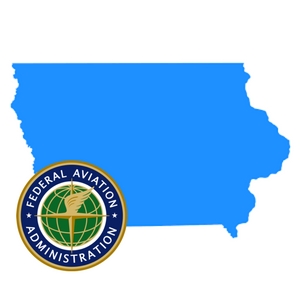
From there, you will receive a Certificate of Aircraft Registration and Proof of Ownership. These will include an identification number for your aircraft. You must have this number displayed on your drone at all times. The number will be valid for up to 3 years.
All aircraft that weighs more than 0.55 pounds, or 250 grams, and less than 55 pounds, or 25 kilograms, must be registered. This also includes any added payloads, such as an onboard camera.
You must be at least 13-years-old in order to register and, effective December 21st, 2015, all newly purchased or made drones must be registered before their first flight. You are able to register through a paper-based process, but you can also do so online by clicking here.
Proximity to Airports in Iowa
As a general rule of thumb, and in accordance with the law from the FAA, you may not fly within a 5-mile radius of any airport. In 2012 the FAA enacted the Modernization and Reauthorization Act which requires hobbyist drone operators, meaning residential, to contact air traffic control and/or airport management if they are operating within a 5-mile radius of any local airport.
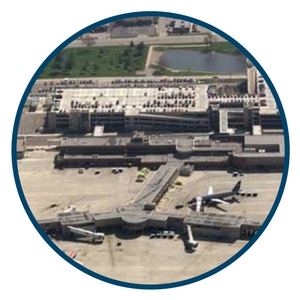
This is enacted nationwide, not only in Iowa, under Part 101 of the Act, being Special Rule for Model Aircraft, to ensure that drone operations under unsafe conditions are disapproved before the drone can be launched.
Regardless of the local airport you will be flying near, and possibly breaching airspace, you will need to contact either the airport air traffic control tower or the airport operator.
You will need to establish an agreed-upon operating procedure with airport air traffic or the airport operator and answer a couple of questions. For example, questions relating to how long you are going to be flying for.
Unique Drone Laws in Iowa
At this time of writing, all of the legal information listed below is deemed as accurate as possible and fully in effect.
Section 808.15 – Chapter 8 – Search and Seizure
Universal Citation: IA Code § 808.15 (2016)
808.15
Unmanned aerial vehicle — information — admissibility.
Information obtained as a result of the use of an unmanned aerial vehicle is not admissible as evidence in a criminal or civil proceeding, unless the information is obtained pursuant to the authority of a search warrant, or unless the information is otherwise obtained in a manner that is consistent with state and federal law.
2014 Acts, ch 1111, §2
Section 321.492B – Chapter 321 – Motor Vehicles and Law of the Road
Universal Citation: IA Code § 321.492B (2016)
321.492B
Use of unmanned aerial vehicle for traffic law enforcement prohibited.
The state or a political subdivision of the state shall not use an unmanned aerial vehicle for traffic law enforcement.
2014 Acts, ch 1111, §1
Other Legal Issues With Drones in Iowa
At this time of writing, there are currently a number of bills in circulation within the state of Iowa surrounding drones.
House Study Bill 518 – Correctional Facilities
A BILL FOR
An Act relating to operating an unmanned aerial vehicle in, on, or above a county jail, municipal holding facility, detention enter for juveniles, or institution under the management of the department of corrections, and providing penalties.
BE IT ENACTED BY THE GENERAL ASSEMBLY OF THE STATE OF IOWA:
Section 1. NEW SECTION. 719.9 Use of unmanned aerial vehicle – prohibitions.
As used in this section:
“Facility” means a county jail, municipal holding facility, secure facility for the detention or custody of juveniles, or institution under the management of the department of corrections.
“Unmanned aerial vehicle” means a vehicle or device that uses aerodynamic forces to achieve flight and is piloted remotely.
A person shall not operate an unmanned aerial vehicle knowing that the unmanned aerial vehicle is operating in, on, or above a facility an any contiguous real property comprising the surrounding grounds of the facility, unless the unmanned aerial vehicle is operated by a law enforcement agency or the person has permission from the authority in charge of the facility to operate an unmanned aerial vehicle in, on, or above such facility.
A person who violates this section commits a class “D” felony. A class “D” felony is punishable by confinement for no more than five years and a fine of at least $750 but not more than $7,500
HB88/HF589 – Numerous Drone Regulations
A BILL FOR
An Act relating to the use of unmanned aerial vehicles, and providing penalties.
BE IT ENACTED BY THE GENERAL ASSEMBLY OF THE STATE OF IOWA:
Section 1. Section 708.11, subsection 1, paragraph b, Code 2017, is amended to read as follows:
B. “Course of conduct” means repeatedly maintaining a visual or physical proximity to a person without legitimate purpose or repeatedly conveying oral or written threats, threats implied by conduct, or a combination thereof, directed at or toward a person. “Course of conduct” includes the use of an unmanned aerial vehicle, as defined in section 708C.1, to maintain visual or physical proximity to a person as provided in this paragraph.
Sec 2. Section 708A.1, subsection 1, Code 2017, is amended to read as follows:
“Material support or resources” means knowingly assisting or providing money, financial securities, financial services, lodging, training, safe houses, false documentation or identification, communication equipment, facilities, weapons, lethal substances, explosives, personnel, transportation, unmanned aerial vehicles, and other physical assets, except medicine or religious materials, for the purpose of assisting a person in the commission of an act of terrorism.
Sec. 3. NEW SECTION. 708c.1 Use of unmanned aerial vehicle – exceptions – penalty.
As used in this section, unless the context otherwise requires:
“Agency” means a state agency or political subdivision of this state or any person acting on behalf of a state agency or political subdivision.
“Dangerous weapon” includes an instrument or device designed for causing damage to property.
“Image” means any capturing of sound waves, thermal, infrared, ultraviolet, visible light, or other electromagnetic wave, odor, or other conditions existing on or about property in this state or a person located on that property.
“Unmanned aerial vehicle” means an aircraft that is operated without the possibility of direct human intervention from within the aircraft.
Agencies.
Except as provided in this paragraph “a”, an agency shall not use an unmanned aerial vehicle to capture an imagine acquired through the use of an unmanned aerial vehicle.
An agency may use an unmanned aerial vehicle to capture an image or to receive or disclose an image acquired through the use of an unmanned aerial vehicle in connection with a search warrant that has been issued under the conditions of section 8082. authorizing the use on private property.
An agency may use an unmanned aerial vehicle without preserving any images under the following circumstances:
When searching for a suspect who committed a crime.
When supporting the tactical operation of another agency.
For crowd monitoring at events.
(a) An agency may use an unmanned aerial vehicle if an emergency exists based on a reasonable belief that an imminent threat exists to the life or safety of a person and within forty-eight hours of the emergency use a supervisory official of the agency files a sworn statement with the district court detailing the grounds for using the unmanned aerial vehicle in the emergency.
(b) If the supervisory official fails to file the sworn statement as required by this subparagraph (3), the supervisory official shall be removed from any future involvement with the agency’s use of an unmanned aerial vehicle, and the agency shall be required to obtain approval from the applicable supervisory body under paragraph “c” prior to any future use of an unmanned aerial vehicle by the agency.
An agency may use an unmanned aerial vehicle on public property.
B. An agency shall not arching data captured or received through the use of an unmanned aerial vehicle unless the data was captured or received during an operation in conjunction with a search warrant or during the existence of an emergency under paragraph “a”, subparagraph (3), but only for forty-eight hours except upon entry of a district court order requiring the archiving of the data for more than forty-eight hours.
C. The acquisition of an unmanned aerial vehicle by a state agency shall be approved by the general assembly prior to such an acquisition. The acquisition of an unmanned aerial vehicle at the county, city, or local government level shall be approved by the county board of supervisors, city council, or other supervisory legislative body that oversees the political subdivision.
D. An agency shall adopt best practices to ensure that unauthorized access to an unmanned aerial vehicle or images captured or received by the unmanned aerial vehicle does not occur.
Persons.
A person shall not use an unmanned aerial vehicle to capture an image of an individual or private property with the intent to conduct surveillance, or to stalk, follow, or intimidate another person.
A person may use an unmanned aerial vehicle to capture or receive an image of an individual if the individual is on public property, or the person has received permission from the individual to capture or receive such an image.
A person shall not use an unmanned aerial vehicle equipped with an instrument that is capable of doing any of the following unless the unmanned aerial vehicle is used over the real property owned by the person or the person has permission from the owner or a tenant of the real property to use the unmanned aerial vehicle over the real property:
Emitting a peculiar sound or excessive noise.
Spraying a liquid or gas.
Dropping an object.
Accredited postsecondary institutions. An accredited postsecondary institution, other than a special security officer or a security agency employed by or otherwise connected with the institution, may use an unmanned aerial vehicle to capture or receive an image for research purposes, or to retain or distribute such an image.
An unmanned aerial vehicle shall not be equipped with a dangerous weapon.
This section does not apply to an operation, exercise, or mission of any branch of the United States military, or the Iowa national guard.
A. A person who violates this section commits an aggravated misdemeanor.
B. A person who violates this section and causes serious injury to another person commits a class “D” felony.
C. A person who violates this section and causes death to another person commits a class “C” felony.
A. On June 30, 2018, and every June 30 thereafter, each state agency and each political subdivision, if required to do so by the supervising legislative body of the political subdivision, that uses an unmanned aerial vehicle shall provide the department of public safety with the following information:
The number of instances in which an unmanned aerial vehicle was used by the agency and the purpose of each use.
The number of crime investigations aided by the use of an unmanned aerial vehicle and a description of how the use of an unmanned aerial vehicle aided each investigation.
The number of instances an unmanned aerial vehicle was used for purposes other than in a criminal investigation and a description of how the use of an unmanned aerial vehicle aided in that purpose.
The annual cost of the unmanned aerial vehicle program of the agency.
B. The department of public safety shall compile the information provided by the agencies under this subsection and present a report detailing the use of unmanned aerial vehicles to the legislative standing committees on government oversight by January 15, 2019, and every January 15 thereafter.
Sec. 4. Section 717.A.1, Code 2017, is amended by adding the following new subsections:
NEW SUBSECTION. 6A. “Control” includes the actions of a person using an unmanned aerial vehicle.
NEW SUBSECTION. 10A. “Enter” includes the actions of a person using an unmanned aerial vehicle.
NEW SUBSECTION. 14. “Unmanned aerial vehicle” means the same as defined in section 708C.1.
SF 2314 – Invasion of Privacy and Law Enforcement
An Act regulating the use of drones and unmanned aircraft, and providing penalties.
BE IT ENACTED BY THE GENERAL ASSEMBLY OF THE STATE OF IOWA:
Section 1. NEW SECTION. 801C.1 Definitions.
As used in this chapter unless the context otherwise requires:
“Drone” means any powered aerial vehicle that does not carry a human operator, uses aerodynamic forces to provide vehicle lift, can fly autonomously or be piloted remotely, can be expendable or recoverable, and can carry a lethal or nonlethal payload.
“Unmanned aircraft” means an aircraft that is operated without the possibility of direct human intervention from within or on the aircraft.
Sec. 2. NEW SECTION. 801C.2 Restrictions on gathering evidence.
A law enforcement agency shall not use a drone or other unmanned aircraft to gether evidence or other information pertaining to criminal conduct, or conduct in violation of a statute, ordinance, regulation, or rule, except to the extent authorized by a warrant.
A person, entity, or state agency shall not use a drone or other unmanned aircraft to conduct surveillance of or to gather evidence related to any person, property owned by any other person, or a farm or agricultural operation without the consent of the other person, property owner, or farm or agricultural operation owner.
Sec. 3. NEW SECTION. 801C.3 Exigent circumstances.
Notwithstanding section 801C.2, a law enforcement agency may use a drone or other unmanned aircraft when exigent circumstances exist. For the purposes of this section, exigent circumstances exist if a law enforcement agency possesses reasonable suspicion that, under particular circumstances, swift action to prevent imminent danger to life is necessary.
Sec. 4. NEW SECTION. 801C.4 Remedies.
In a civil action an aggrieved party may obtain all appropriate relief to prevent or remedy a violation of all this chapter.
Any information obtained or collected in violation of this chapter shall not be admissible as evidence in a criminal civil, or administrative proceeding.
FAQ on Iowa Law and Drones
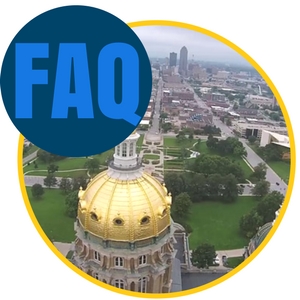
If you do not see your question, or an answer to it, listed below, feel free to get in touch with us and we’ll gladly give you one.
Is a drone/UAS considered the same as a model aircraft?
The United States Congress has defined and concluded that a model aircraft is only considered a drone or a UAS when the following points are met:
- It’s flown for recreational purposes or as a hobby and not for any business or commercial reasons
- It’s flown within visible distance, meaning being able to see it at all times, of the individual operating it
- It’s capable of sustaining flight within the atmosphere, meaning that it can fly
If your model aircraft, regardless of whether or not you acquired it pre-built or built it yourself, meets the above points to your knowledge, it’s considered a drone/UAS.
What is the Small UAS Rule?
The Small UAS Rule requires those who have unmanned aircraft systems, or UAS, that weigh less than 55 pounds, payload included, to register their aircraft with the FAA. This only applies to recreational or hobby fliers and not commercial drone use, however.
Is the FAA’s Small UAS Rule still in effect?
Yes, it has been in effect from August 29th of 2016 and is still in effect at this time of writing.
Do I have to carry my Certificate of Aircraft Registration while flying my UAS at all times?
Yes, you must have the registration certificate from the FAA at all times during flight operation. In accordance with federal law, all UAS operators must show their certificate of registration to any local, state, or federal law enforcement officer when they are asked to do so.
What do I do for registration if my UAS is over the 55-pound limit?
If your UAS weighs more than 55 pounds, including payload, you will need to register it by clicking here.

Drone Laws in Iowa
Knowing the laws, regulations, restrictions, etc., regarding drones in your state is extremely important. Remember to educate yourself, follow the rules, fly safely and responsibly, and have fun!

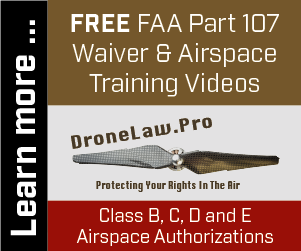

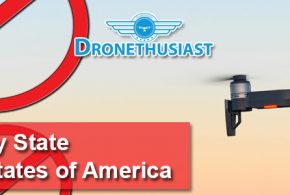
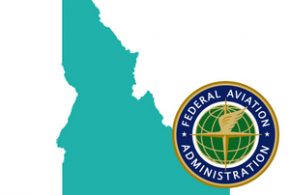
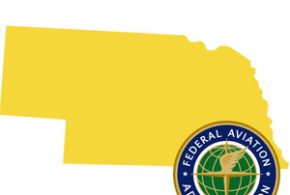

I just bought a small EACHINE© E58 DRONE. Does this count as something I have to register? It’s just for fun for my son n I.
no you don’t have to register that.
Just got a DJI Mavic Air. Does this drone need to be registered?
Read the article at the bottom. No license needed IF.. Drone must be in view at all times, and only flown for recreational or hobby purposes. Avoid flying over restricted areas like municipal buildings and 5 miles away from airports.
Since the Mavic Air likely would be more than 250 grams, wouldn’t it need to be registered with FAA, even for hobbyist ? Or am I missing something.
yes, it is over 250 grams
Does anyone know if these laws are likely to be amended or updated soon?
My grandson is coming to visit and plans to btting his drone
Does he need to register in Iowa during his week long stay
what can you legally do when someone is flying a drone over your property at night — how do you find who it belongs to when it is dark–
What is the issue? is it at your windows? hovering over your roof? or you simply don’t like the idea that it is up there? Heck, planes and helicopter fly over your property all night long with much better night vision and cameras than any drone has. Also, a private drone, with correct lights and FAA licenseing, is allowed to fly at night. And, as far as privacy goes, what do you think it can see, from 200ft up and in the dark. I suggest you get educated as to what they can/ can not do before you worry about a toy drone. Most likely no law is being broken unless it is hovering over your house, making it impossible to enjoy your own property.
Awesome answer, well done.
How to find out what parks city/county/state will allow for drones? None of them have any information on their website and when traveling around I don’t always know where I will feel like stopping to contact them ahead of time.